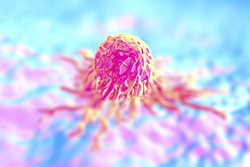Elucidating the natural mechanisms of tumour suppression
The normal cell cycle of growth, duplication and division is controlled by a multitude of factors and genes. It thus takes place at the required rate to either maintain the status quo (homeostasis) in adults or to facilitate growth during development. The exhaustion of replicating potential in the presence of continued metabolic activity, a sort of cell cycle arrest, in cultured primary cells is known as senescence. There is now overwhelming evidence of similar phenomena in vivo. Senescence appears to be a natural anti-tumour mechanism. In fact, malignancy occurs when oncogene-induced senescence (OIS) is bypassed through mutations in oncogenes or tumour suppressors. It also plays a role in age-related disorders through the inhibition of self-renewal of stem cells. Scientists investigated genetic pathways and molecules regulating cellular senescence with EU support of the project 'Identification of genes controlling senescence in human epithelial cells: Role in cancer' (EPITHELIALSENESCENCE). The small INK4/ARF locus in humans contains senescence-associated tumour-suppressor genes. One of these encodes the protein p16INK4a. Enzymes known as polycomb repressive complexes (PRC1 and PRC2) are involved in silencing of the INK4/ARF genes without changing DNA sequence (epigenetic silencing). Investigators have now shed new light on the ways in which two homeobox, or Hox, proteins mediate INK4a silencing. H2.0-like homeobox 1 (HLX1) and homeobox A9 (HOXA9) directly associate with the INK4a promoter and repress INK4a expression by recruiting PRC2 and a molecule with which it interacts (HDAC1). Furthermore, six other homeobox proteins were shown to repress p16INK4a. Also, HLX1 and HOXA9 were found to regulate other senescence-associated PRC targets in addition to INK4a. Taken together, project results support the interplay of homeobox proteins and PRCs as a key contributor to the repression of senescence, potentially leading to tumour growth. More detailed understanding of the cellular mechanisms of oncogenesis will pave the way to targeted therapies for arguably the 21st century's most aggressive disease.







